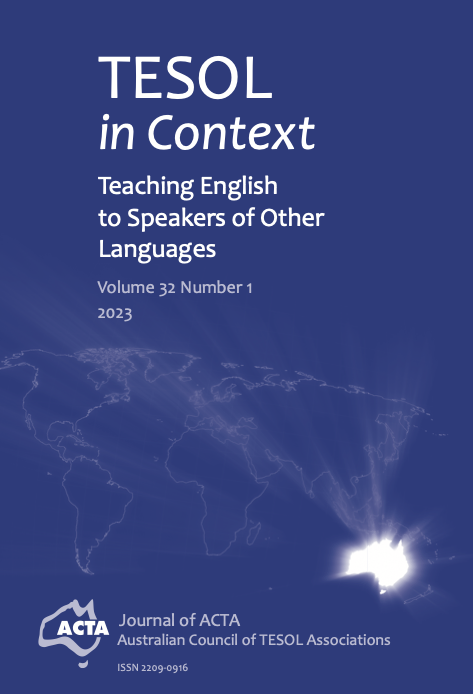Enablers and barriers for plurilingual practices: How EAL/D teachers support new arrivals in a rural secondary setting
DOI:
https://doi.org/10.21153/tesol2023vol32no1art1813Abstract
This paper explores the reported practices of five specialist EAL/D teachers from a rural Australian city. They work with a cohort of refugee students from a single cultural group, who recently arrived in Australia with minimal English and generally low levels of literacy in their first language. Survey research was conducted to explore how plurilingualism was being supported amongst these students. Information was sought on how home languages featured and were supported in the students’ learning. Plurilingual practices occurred predominantly in the EAL/D setting, where participants benefited from ‘Goldilocks conditions’. These conditions were characterised by a homogenous student group and allowed for a slowing down of the curriculum and the incorporation of students’ first languages in the learning process. The presence of skilled bilingual aides was the lynchpin for the success of plurilingual practices in this study. Our research highlighted the need for further investigation into the enablers and barriers of collaborative practice between EAL/D and mainstream teachers and the role bilingual aides play in supporting plurilingualism in schools. There is evidence from this study to support reframing the concept bilingual education in Australia, to better capture the complexities of plurilingual interactions in school contexts.
Metrics
Downloads
Published
Issue
Section
License
Copyright (c) 2023 TESOL in Context

This work is licensed under a Creative Commons Attribution-ShareAlike 4.0 International License.






